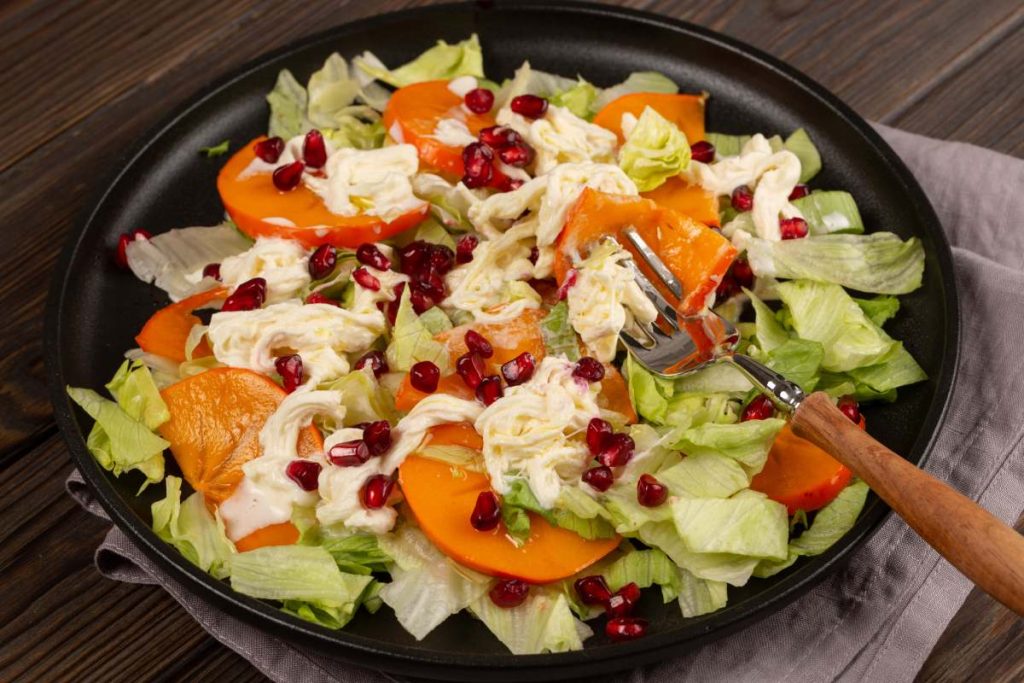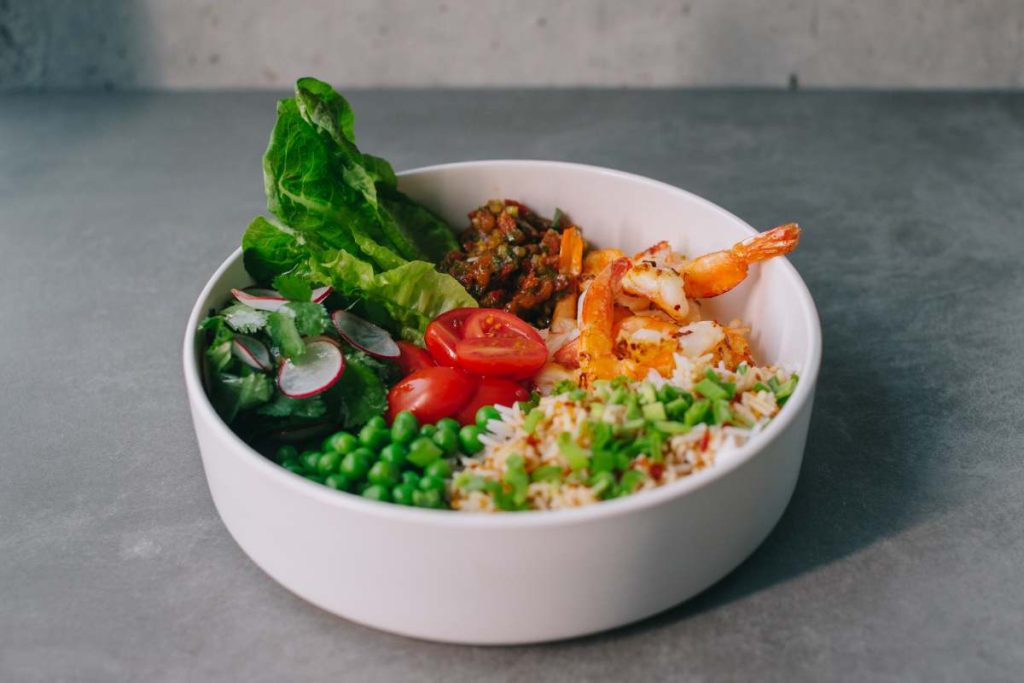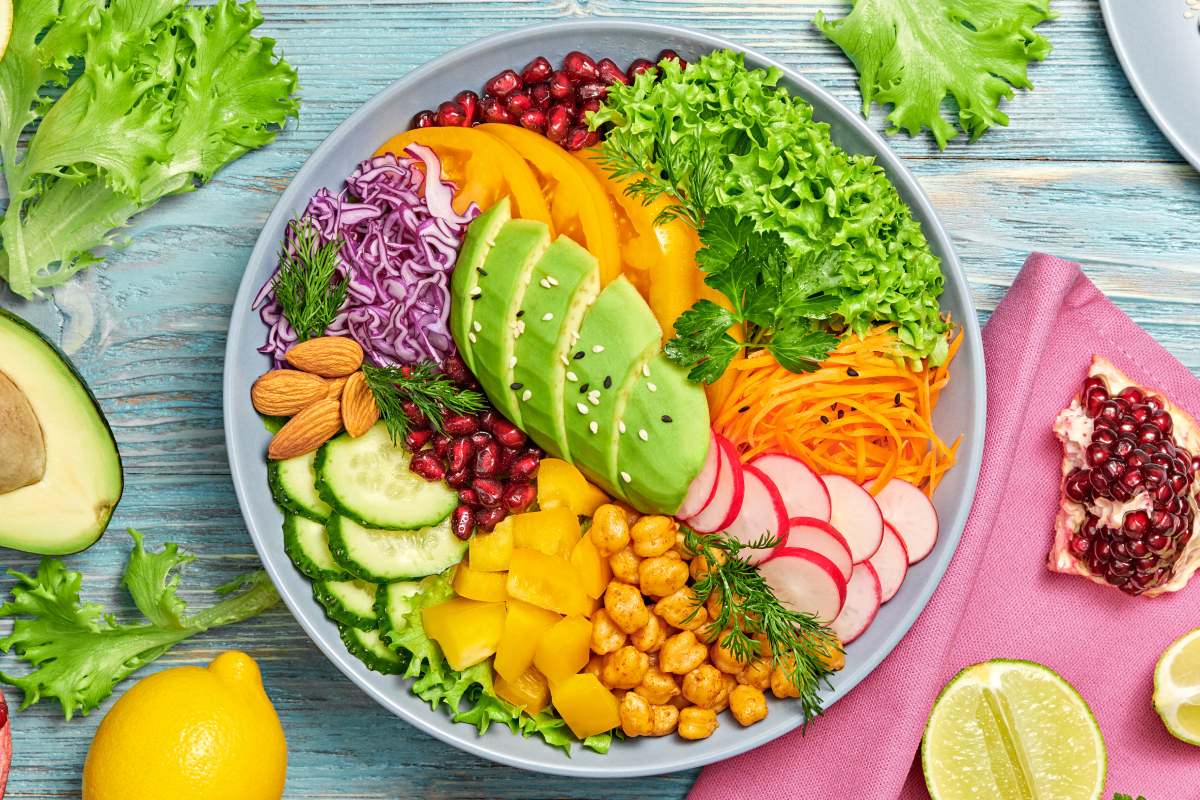Salads are often celebrated as a cornerstone of healthy eating, offering a versatile and delicious way to incorporate a wide range of nutrients into our diets. But with so many options and ingredients available, it can be challenging to know what makes a salad truly healthy.
Whether you’re enjoying a big bowl of greens or crafting the ultimate nutritious salad, understanding the key components is essential for maximizing health benefits.
This article explores the healthiness of salad bowls, the considerations for eating large salads, and provides guidance on creating the healthiest salad possible.
Are Salad Bowls Healthy?
Salads have long been considered a staple of healthy eating. But what about salad bowls? Are they really as healthy as they seem? Let’s explore this topic and find out what makes a salad bowl healthy or not.
What is a Salad Bowl?
A salad bowl is essentially a large serving of salad, often including a variety of ingredients like vegetables, proteins, grains, and dressings. The idea is to combine different flavours and textures in one meal. This makes salad bowls not only nutritious but also filling and satisfying.
The Health Benefits of Salad Bowls
- Nutrient-Rich: Salad bowls are often packed with a variety of vegetables, which are rich in essential vitamins and minerals. Leafy greens like spinach, kale, and lettuce provide vitamins A, C, and K, along with iron and calcium. Adding colourful veggies like bell peppers, carrots, and tomatoes can increase the intake of antioxidants, which help protect the body from damage.
- High in Fiber: Vegetables and whole grains found in salad bowls are excellent sources of dietary fibre. Fiber aids in digestion helps maintain a healthy weight, and reduces the risk of chronic diseases like heart disease and diabetes.
- Protein-Packed: A balanced salad bowl often includes a protein source, such as grilled chicken, tofu, beans, or fish. Protein is essential for muscle repair and growth, and it helps keep you full longer, reducing the temptation to snack on unhealthy foods.
- Healthy Fats: Adding healthy fats to your salad bowl can enhance the absorption of fat-soluble vitamins (A, D, E, and K). Avocado, nuts, seeds, and olive oil are excellent sources of healthy fats that can improve heart health and keep your skin glowing.
Potential Pitfalls
While salad bowls can be very healthy, there are some common pitfalls to watch out for:
- Calorie Overload: Sometimes, a salad bowl can become a calorie bomb, especially when topped with high-calorie ingredients like cheese, bacon, croutons, and creamy dressings. While these additions can make a salad more flavorful, they can also add a lot of extra calories and unhealthy fats.
- Hidden Sugars and Sodium: Many store-bought dressings and toppings contain added sugars and high levels of sodium, which can negate some of the health benefits of your salad. It’s always a good idea to check the labels or, better yet, make your own dressings at home.
- Lack of Balance: A salad bowl that consists only of vegetables may be low in protein and healthy fats, making it less satisfying and potentially lacking in essential nutrients. It’s important to include a good mix of proteins, healthy fats, and carbs for a well-rounded meal.
Tips for a Healthy Salad Bowl
To make sure your salad bowl is as healthy as possible, follow these tips:
- Base of Greens: Start with a variety of leafy greens for a nutrient-dense base.
- Add Colorful Veggies: Include a range of vegetables to ensure you’re getting a wide array of vitamins and minerals.
- Incorporate Protein: Add a protein source like chicken, tofu, beans, or fish.
- Healthy Fats: Include healthy fats such as avocado, nuts, seeds, or olive oil.
- Mind the Dressing: Opt for homemade dressings or choose ones with simple, wholesome ingredients.

Is it OK to Eat a Big Bowl of Salad?
Yes, it is generally okay to eat a big bowl of salad, especially if it’s filled with a variety of nutritious ingredients. However, there are a few considerations to keep in mind to ensure that your salad is both healthy and balanced.
Benefits of Eating a Big Bowl of Salad
- High Nutrient Intake: A large salad can provide a significant amount of essential vitamins and minerals, particularly if it includes a variety of vegetables. Leafy greens, colourful veggies, and other plant-based ingredients are rich in nutrients like vitamins A, C, K, and folate.
- Fiber-Rich: Vegetables and whole grains in salads are excellent sources of dietary fibre. Fibre is important for digestive health, helps regulate blood sugar levels, and can aid in weight management by promoting feelings of fullness.
- Hydration: Many vegetables have high water content, which can help keep you hydrated. This is especially beneficial in warm weather or after physical activity.
- Low in Calories: Salads made primarily with vegetables are typically low in calories, making them a great option for those looking to manage their weight.
Considerations for a Big Salad
- Balanced Nutrition: While vegetables are nutritious, it’s important to include a variety of food groups to make your salad a complete meal. This means adding a source of protein (like chicken, tofu, beans, or eggs), healthy fats (such as avocado, nuts, seeds, or olive oil), and perhaps a small portion of whole grains (like quinoa or brown rice).
- Watch the Dressings and Toppings: Many store-bought dressings and toppings can be high in calories, unhealthy fats, sugars, and sodium. To keep your salad healthy, opt for dressings made from simple, wholesome ingredients or make your own. Limit high-calorie toppings like cheese, croutons, and bacon, or choose lighter versions.
- Digestive Considerations: Eating a large number of raw vegetables can sometimes cause digestive discomfort, such as bloating or gas, especially for those who are not used to high-fibre diets. If this is a concern, consider incorporating a mix of raw and cooked vegetables or starting with smaller portions and gradually increasing them.
- Nutrient Absorption: Some vitamins, like A, D, E, and K, are fat-soluble, meaning they are better absorbed when eaten with fat. Including a healthy fat source in your salad can help you get the most nutritional benefits.
Eating a big bowl of salad can be a nutritious and satisfying way to enjoy a meal, as long as it’s well-balanced and includes a variety of food groups. It’s an excellent way to consume a wide range of nutrients while keeping calorie intake in check. Just be mindful of the dressings and toppings, and listen to your body’s signals to ensure that your meal is both enjoyable and healthy.

What is the Healthiest Salad to Eat?
The healthiest salad to eat is one that is well-balanced, nutrient-dense, and includes a variety of fresh, whole ingredients. Here’s a breakdown of the components that make up a nutritious salad:
1. Base of Leafy Greens
Start with a generous portion of leafy greens, which are low in calories but high in vitamins, minerals, and fibre. Some of the healthiest options include:
- Spinach: Rich in iron, magnesium, and vitamins A and C.
- Kale: Packed with vitamins A, C, and K, as well as calcium and antioxidants.
- Arugula: A good source of vitamin K and folate with a peppery flavour.
- Romaine Lettuce: Contains vitamin C and potassium.
2. Colorful Vegetables
Adding a variety of colourful vegetables not only makes the salad more visually appealing but also ensures a broader range of nutrients. Consider including:
- Bell Peppers: High in vitamins A and C.
- Carrots: A great source of beta-carotene, fibre, and antioxidants.
- Tomatoes: Rich in lycopene, an antioxidant, and vitamin C.
- Cucumbers: Hydrating and low in calories, with a good amount of vitamin K.
3. Lean Protein
Including a source of protein is crucial for making the salad filling and balanced. Healthy protein options include:
- Grilled Chicken: A lean source of protein.
- Tuna or Salmon: Rich in omega-3 fatty acids and high-quality protein.
- Tofu or Tempeh: Excellent plant-based proteins, especially for vegetarians or vegans.
- Legumes: Beans, chickpeas, and lentils add protein and fibre.
4. Healthy Fats
Adding healthy fats can improve the absorption of fat-soluble vitamins and keep you satiated. Good choices include:
- Avocado: Provides monounsaturated fats, fibre, and potassium. Avocados are also recommended food that can help ease anxiety.
- Nuts and Seeds: Almonds, walnuts, chia seeds, and flaxseeds offer healthy fats, protein, and omega-3 fatty acids.
- Olive Oil: Use as a base for dressings; it’s a source of monounsaturated fats and has anti-inflammatory properties.
5. Whole Grains (Optional)
For added texture and nutritional value, you can include a small portion of whole grains:
- Quinoa: A complete protein that also provides fibre and various minerals.
- Brown Rice or Farro: Adds a nutty flavour and more fibre.
6. Light and Flavorful Dressing
A healthy dressing can enhance the flavours of your salad without adding excessive calories or unhealthy ingredients. Try:
- Olive Oil and Vinegar: A simple and classic choice.
- Lemon Juice and Olive Oil: Fresh and light, with a bit of zest.
- Greek Yogurt-Based Dressings: A creamy alternative with added protein.
7. Optional Additions
- Herbs: Fresh herbs like basil, cilantro, or parsley can add a burst of flavour.
- Fruits: Slices of apple, berries, or citrus can provide natural sweetness and extra nutrients.
- Fermented Foods: Sauerkraut or pickles can add a tangy flavour and beneficial probiotics.
Conclusion
Adding salads to your daily meals is a tasty and healthy way to enjoy fresh ingredients. A big, balanced bowl of salad packed with a mix of nutrients can be a smart choice for your health. Start with leafy greens, toss in some colourful veggies, a bit of lean protein, a sprinkle of healthy fats, and a dash of a light dressing, and you’ve got yourself a salad that’s as pleasing to your palate as it is good for your body. Whether you’re in the mood for something light or something more filling, a well-made salad is a flexible and wholesome option that can match your dietary wants and needs. Just remember, the secret to a great salad is in the balance and variety, ensuring it’s both a delight to eat and a boon for your health.

